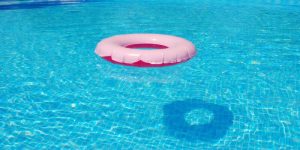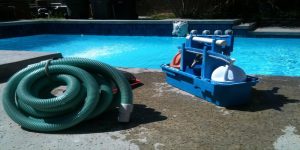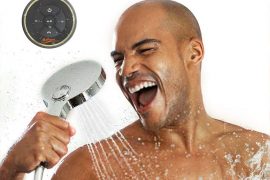Love it or hate it, pool maintenance is an essential task for pool owners. If you want to make sure your pool is clean and inviting throughout the swimming season. You’ve got a lot of work ahead of yourself.
It can seem daunting, especially if you’re a relatively new pool owner. Knowing where to begin and which chemicals to buy can be a challenging task.
This article provides a brief overview of pool maintenance tips on costs, and how often maintenance is required. And some practical pool maintenance tips to help save money throughout the year. Hopefully, you’ll discover that decorating your pool area doesn’t have to be so scary and costly.
Factors that influence the cost of maintenance

There’s no one-size-fits-all solution for pool maintenance because pools vary. Here’s a list of factors that will affect the cost of maintenance for your pool.
- Pool size – Larger pools require more chemicals and longer cleaning times because there’s more water and surface area to treat, which can increase maintenance costs.
- Frequency of use – Pools that are used more frequently will have more stuff: human gunk, lotions, oils, hair, bacteria, etc., and will thus require more maintenance to keep the water clean and safe.
- Location – The climate and environment you live in can also affect the cost of maintenance. For example, if you live in an area with high levels of pollution or dust, you may need to invest in additional cleaning equipment or chemicals. Another example is that in desert environments like Arizona, water naturally runs hard, so you’ll need less calcium carbonate.
- Saltwater vs chlorine – Saltwater pools will generally need less maintenance because the chlorine generator will automatically convert your salt to chlorine to clean your pool. You won’t need as many chlorine and algae treatments, but the upfront costs are higher.
- Liner Material – Vinyl liners are popular because they’re affordable and easy to install, but they require regular cleaning and maintenance to prevent algae growth and staining. Fiberglass pools, on the other hand, are non-porous, meaning they’re resistant to algae growth and staining, so maintenance costs are comparatively lower. With concrete, maintenance costs will be high up front, due to acid washing and sealing, but they’ll last for decades with proper care and minimal treatment.
Pool Cleaning Services
If you want to delegate pool maintenance work to a contractor, you’ll have to pay a hefty price. Home Advisor reports that the cost of a one-time residential pool cleaning is typically $233.
Pool owners should budget for basic upkeep costs between $1200 and $1800 per year, and up to $5000 for more extensive services, such as water quality testing, tile cleaning, acid washing, and stain removal.
No matter what kind of pool you have or where you’re located, good maintenance is the key to a safe, healthy, and enjoyable swim.
Knowing the basics of pool maintenance tips and regularly checking your pool for any signs of damage or wear and tear will help ensure that it’s able to last for years to come.
How often should you be maintaining your pool?

Just like the cost of maintenance, the frequency of maintenance depends on several factors including pool type, pool size, climate, and how often the pool is used.
Generally speaking, you should plan to clean the pool at least once a week and balance the pH levels every two weeks. You should also check the water chemistry and adjust it as needed for your swimming pool at home.
Pool Cleaning
Cleaning a pool typically involves using a skimmer net to remove any leaves, insects, or other debris floating on the surface.
Brushing the pool walls and floor to prevent the buildup of algae, and vacuuming the debris on the bottom of the pool.
After that, just backwash the filter to remove any trapped gunk.
Chemical Balancing
To check the water chemistry, you can purchase test strips online or at any pool store. Dip the stick in your pool and compare the colors to the key on the bottle to see if any of your chemicals are out of balance.
Alternatively, many pool stores allow you to bring in a sample of your pool water. The stores will use specialized equipment to identify your chemical levels and make recommendations as needed. Make sure to use a clean bottle or container!
Being consistent with the maintenance and chemical balance is critical in preventing algae outbreaks, harmful bacteria, and other conditions that would render your pool unsuitable for swimming.
11 Pool Maintenance Tips to Save Money

Learning the basics of pool maintenance tips so you can do it yourself is extremely beneficial when it comes to cutting down on your maintenance costs – it’s always cheaper to do it yourself!
By understanding how to properly care for your pool, you’ll be able to address issues before they become major problems that require expensive repairs, prolonging the lifespan of your pool equipment.
With this in mind, let’s take a look at 11 cost-effective pool maintenance tips:
1. Investigate DIY Repairs
When possible, consider taking on minor repairs yourself instead. Researching the components of your pool and learning how to troubleshoot common issues can save money and time.
Concrete or gunite cracks, pool light failure, cloudy water, pump problems, and filter leakage are a few common troubles that can be fixed without hiring a professional.
Visit a pool store, describe your issue, and the sales associates will be more than happy to share their product recommendations.
2. Use Quality Equipment
Investing in quality equipment for pools can be a smart decision in the long run as it can save you money on repairs and replacements over time.
Before pulling the trigger on any one piece of equipment, evaluate its cost and the benefits that it will provide. For example, a high-quality pump might cost more initially, but it could save you money in the long run by consuming less energy and requiring less maintenance.
As with any product, research the brand and their reputation for quality and reliability. Investing in a reputable brand with a proven track record can help ensure that you are getting a product that is worth the money. Pentair and Hayward are the kings when it comes to pool pumps, filters, and heaters.
3. Vacuum Manually

While automatic pool vacuums have become extraordinarily popular in recent years, if your goal is cost-effectiveness, get a manual vac and do it yourself.
Don’t let a salesman convince you to buy the new, fancy $3000 robot when you can rather easily do the job yourself with a manual vacuum that doesn’t cost more than $100.
Manual vacuums allow you to easily maneuver the vacuum head to target specific areas of the pool that may require extra attention, as well as remove larger debris.
Automatic pool cleaner robots are susceptible to getting clogged, jack up your electricity bill, and have many complex moving parts so they’re harder to repair.
4. Clean Your Pool Regularly
Use a leaf skimmer once every few days to keep your pool free of leaves, insects, dirt, and anything else that falls into your pool. Over time, this debris will alter the chemical composition of your water or sink to the bottom, where they become harder to treat.
To keep your pool clean and free of leaves, insects, dirt, and floating debris. It’s recommended to use a long-handled leaf skimmer regularly. By skimming the surface once a day or every few days, you can remove debris before it sinks to the bottom, making it more difficult to clean.
Another major concern for pool owners is the issue of clogged drains. It can cause significant damage to your motor and lead to costly repairs. To avoid unnecessary expenses, it’s crucial to check your drains regularly and take preventative measures to keep them clear.
5. Buy Chemicals in Bulk
Buying pool chemicals in bulk is a great way to save some money on your maintenance costs. Consider your usage rate and compare it to the shelf life of various chemicals to see if buying in bulk makes sense. As always, buy high quality products from reputable manufacturers to save you money in the long term.
It’s important that many pool chemicals are hazardous and poisonous. So they should be kept secure in a shed or basement. And kept away from other volatile chemicals and elements.
6. Utilize Solar Heating

Solar heating is a fantastic investment if your goal is keeping your pool costs down. Though the installation price is steep, you’ll see savings over time.
How it works is that solar panels installed on your roof capture energy from the sun and then transfer it to your pool via pipes. It’s all automatic; no maintenance is required.
This warms the water in your pool, so you get the benefit of a comfortable swim. And a longer pool season without having to run your pool heater as much.
As an added benefit, they increase your property value. By helping you recoup some or all of your initial investment if you sell your home in the future.
7. Clean and Replace Filters
Cleaning and changing filters helps to improve pool water quality by removing dirt, debris, and other contaminants from the water.
This means that you will need to use fewer chemicals to maintain the water quality. It can lead to significant savings over time.
There are three main types of pool filters: cartridge, sand, and diatomaceous earth (DE).
8. Cartridge filters
Cartridge filters use a pleated filter cartridge to trap debris and contaminants. Using cartridge filters are easy to clean and maintain and are effective at removing small particles from the water.
Cartridge filters typically need to be cleaned every 4-6 weeks and replaced every 1-2 years, or around 2000 hours of swim time. Sunscreen, deodorants, hair care products, and other oils and chemicals in the water will shorten the lifespan of your filter.
9. Sand filters
Sand filters use a bed of fine sand to trap debris and contaminants. Using sand filters is easy to maintain and is effective at removing large particles from the water. Sand filters typically need to be back washed every few weeks. And the sand should be replaced every 3-5 years.
10. DE filters
Similar to sand filters, DE filters use a layer of a powder called diatomaceous earth to trap debris and contaminants. DE filters are very effective at removing small particles from the water.
But they require more maintenance than other types of filters. DE filters need to be backwashed every few weeks and the DE powder needs to be replaced every year.
When filters become clogged, it can cause your equipment to work harder to maintain the desired water quality. It can lead to increased wear and tear.
By changing filters regularly, you can help to ensure that your equipment lasts longer. This can save you money on repairs or replacements.
11. Use a Pool Cover
Using a pool cover can help to reduce evaporation, which can lead to lower energy costs.
When water evaporates from your pool, it takes heat with it. It means that your pool heater or pump will need to work harder to maintain the desired temperature.
By using a pool cover, you can reduce the amount of heat loss due to evaporation. It can help to lower your energy bills.
Cover your pool when you’re not using it for an extended period of time. Such as during a family vacation or during a windy/rainy couple of days. The goal is to keep leaves, debris, rain, and other contaminants out of your pool. To ease the burden on your pump and filter.
This means that you will need to spend less time and money cleaning your pool. As well as using fewer chemicals to maintain the water quality.



